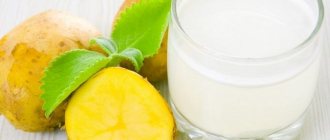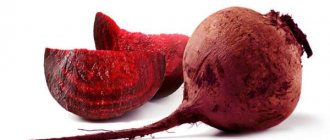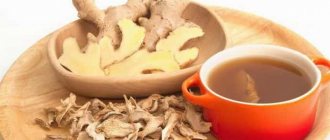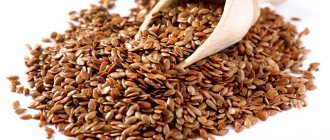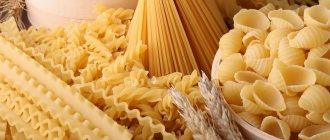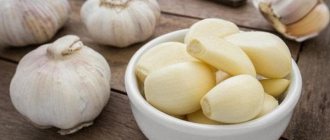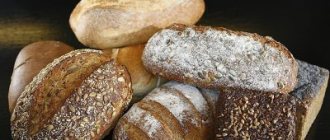Gastritis is a rather complex disease in which the patient must limit his consumption of ordinary foods and switch to a healthy diet. This step is necessary, as it allows you to eliminate inflammation of the stomach and the symptoms accompanying this condition. Porridge for gastritis is a very good product that can satisfy hunger and allow the inflamed organ to recover as quickly as possible.
Important: Porridges in the presence of gastritis are not able to irritate the gastric mucosa. They are indicated both for gastritis with high acidity and when it is low. This product also has a large number of beneficial properties for the entire digestive system.
Useful properties of oatmeal
Oatmeal is a healthy grain food that is rich in many important, beneficial nutrients, and the composition of these nutrients is well balanced.
Oats contain carbohydrates, including something called beta-glucan. Compared to other grains, oatmeal contains more protein and healthy fats.
Minerals in oats contain:
- zinc;
- selenium;
- iron;
- magnesium;
- thiamine;
- phosphorus;
- manganese.
Also, he is rich:
- antioxidants;
- vitamins H, E, PP and B-group (B1, B2, B6, B9).
How do oats affect the human body?
- Reduces blood sugar levels, therefore recommended for diabetes.
- Removes excess fluid from the body, and with it harmful substances.
- Reduces cholesterol levels.
- It has a positive effect on the gastrointestinal tract and helps with constipation.
- Improves metabolic processes.
- Normalizes the functioning of the digestive system.
- Strengthens the nervous system.
- Good for the liver and thyroid gland.
Benefits of oatmeal for gastritis
- Relieves inflammation, enveloping the walls and mucous membrane of the stomach.
- Normalizes digestion due to its composition.
- Positively affects intestinal function and peristalsis.
- Removes toxins and salts from the body.
How is millet porridge beneficial and for whom?
The presence of fiber in millet cereals has a positive effect on the gastrointestinal tract.
Eating millet porridge helps to normalize digestion, eliminate dysbacteriosis, normalize stool, and the enveloping effect relieves inflammation of the mucous membrane and the feeling of pain. However, doctors do not recommend eating millet porridge for gastritis with increased gastric secretion, because it increases acidity. Also, you should not use it during an exacerbation of gastritis for the reason that fiber can cause irritation of the mucous membrane and complicate the course of the disease.
During the period of remission, as well as in the absence of exacerbations, gastroenterologists allow this type of porridge to be included in the diet.
To prevent millet from having a negative effect on the stomach, it is important to know how to properly prepare porridge from it. As a rule, porridges for gastritis are prepared with water or milk, and their consistency should be liquid, enveloping and viscous.
To prepare millet porridge with water, you will need one glass of millet, two glasses of water, one tablespoon of butter, and a pinch of salt.
Cooking process:
- Rinse the millet, then pour it into the pan.
- Pour water over the cereal, add salt and put on fire.
- Reduce heat, as soon as the porridge boils, cook the cereal until fully cooked.
- Add butter to the finished porridge to taste.
Pumpkin porridge with millet is not only tasty, but also very healthy for the stomach, and moreover, not at all difficult to prepare. To prepare it you need 0.5 kg of pumpkin pulp, one glass of dry millet, half a liter of milk, two tablespoons of butter and a little salt.
Further course of action:
- Rinse millet cereals twice in cold water and once in hot water.
- Cut the pumpkin into small cubes and boil in milk.
- Add millet to the pumpkin pulp and cook the porridge over low heat until completely thickened, stirring constantly.
- Submerge the thickened porridge in the oven for about fifteen minutes.
- Grease the prepared porridge with oil.
A properly selected and prepared dish envelops the walls of the stomach and stimulates the healing of the mucous membrane. If there is too much coarse dietary fiber in the cereal, it should not be included in the menu during an exacerbation, since the dense structure will only aggravate the painful situation.
A lump of food enters the stomach - crushed (that is, chewed) and saliva saturated with enzymes. Gastric juice is actively produced, including pectin, bicarbonates, mucus, and hydrochloric acid. Digestive juices cause the lump to swell, the latter breaks down and hydrolyzes. Next, the contents of the stomach are sent to the duodenum.
To ensure a normal digestive process, the gastric mucosa must consistently perform biological tasks: produce juice components, create peristalsis, and break down a bolus of food. If even in one link the algorithm goes astray, the complete absorption of nutrients is impaired.
The mucous membrane, inflamed as a result of gastritis, needs to maintain gentle conditions - thermal, chemical, mechanical, so that the body receives vitamins, microelements, and energy sources in the required doses. It is porridge that helps to fully saturate the body against the background of gastrointestinal pathology.
Porridge is a natural cure for gastritis, as it envelops the stomach and reduces the aggressive effects of hydrochloric acid. The predisposition to rapid swelling, rapid breakdown, and comprehensive absorption allows the boiled dish not to irritate the digestive organs, relieve pain and internal pressure.
Cereal porridges are famous for their rich nutritional composition, thanks to which the body receives:
- slow carbohydrates,
- cellulose,
- vegetable proteins and fats,
- vitamins,
- microelements.
Cereal porridges are very useful for gastritis.
After eating such dishes, the patient does not feel heaviness and bloating and feels full for a long time.
We can talk about the benefits of this product for a very long time, so we’ll just try to briefly list the beneficial substances that it contains and what they affect.
First of all, this porridge is rich in a whole range of vitamins:
- B1 - helps improve overall mood, balances hormonal levels, fights depression;
- B2—strengthens skin and hair, and also strengthens bone strength;
- B6 - interacts with calcium and has a positive effect on the functioning of the heart muscle;
- B9 - normalizes carbohydrate and fat metabolism in the body, promotes blood formation;
- PP - useful for the normal functioning of the skin and mucous membranes.
Microelements in millet:
- Potassium – has a positive effect on the functioning of the cardiovascular system;
- Iron – prevents anemia and improves blood circulation;
- Magnesium – increases the body’s endurance and suppresses inflammatory processes;
- Manganese – stabilizes the functioning of internal organs;
- Copper – prevents skin aging processes;
- Sodium – has a beneficial effect on digestion;
- Fluorine and silicon - accelerate growth and strengthen the condition of hair, teeth, bones and nails.
Effect of other substances:
- Amino acids – maintains cell tone;
- Fats – promote the absorption of nutrients;
- Carbohydrates – remove waste and toxins from the body.
Also, among other things, it is rich in iodine, phosphorus and starch, which also affects the benefits of millet.
Millet porridge contains a lot of fiber. This is a useful microelement that can have a beneficial effect on the state of the gastrointestinal tract as a whole. However, with gastritis, when the inner lining of the stomach is inflamed, fiber can only aggravate the situation. Therefore, millet porridge for gastritis with high acidity is not so useful, and gastroenterologists advise avoiding its use during an exacerbation of the disease, as well as in the chronic form. As a last resort, use it rarely and in small quantities.
Who will benefit from this cereal will be discussed further.
Cereals help to quickly remove toxins and waste from the body. Therefore, it is recommended to include it in their diet for residents of environmentally unfavorable cities.
The high magnesium content in this product helps improve mental performance, which means it will take less time to complete tasks.
The rich fiber content and the ease with which millet is digested makes this product indispensable for people suffering from these diseases.
For athletes
The benefit of millet porridge for this population group is to increase muscle elasticity, which makes training more effective. In addition, the wealth of vitamins and microelements contribute to the overall strengthening of the body.
On the one hand, there is a wealth of various beneficial substances that a weakened body needs. On the other hand, it also helps the body eliminate antibiotics, which are compounds hostile to our body.
One of the main beneficial properties of millet is its lipotropic effect. This is why millet porridge is especially loved by women. Once in the body, millet prevents fats from being absorbed into the walls of blood vessels, which promotes weight loss. Plus, girls who are on fairly strict diets use millet to “get” the microelements necessary for the body.
Despite the enormous benefits that this product can bring to the body, there are times when its use, or excessive consumption, will not benefit the body. You can talk about both the benefits and harm of millet porridge. Therefore, it is worth familiarizing yourself with the general contraindications, and if in doubt, it is better to consult a doctor.
Individual intolerance to the product. All people are different, with their own characteristics, so in rare cases, millet porridge may be contraindicated for a person for no apparent reason. This intolerance will signal itself with an allergic reaction, or stomach upset.
The harm of millet will also be noticeable to people with low stomach acidity, certain digestive diseases, those suffering from chronic constipation, as well as women during pregnancy. It is possible and healthy to consume millet porridge last, but you should not overdo it.
To preserve the beneficial properties of porridge, as well as to give it a pleasant taste, you need to know how to cook millet correctly. Before cooking, millet is washed with cold water. You can spend time and select all the dark grains, but if you are not squeamish, then you should not do this.
The proportions are quite varied, everyone has different tastes, but to prepare crumbly porridge with water you need to follow the proportions of 1:2. If you want to get a viscous porridge, then increase the amount of water by 0.5.
To prepare millet with milk, you should increase the amount of liquid by 1-1.5 parts. Before starting cooking, pour boiling water over the millet, and then cook the porridge over low heat until it boils. After the liquid has boiled, it should be cooked for about half an hour. After this, add oil and various additives to taste. You can start eating.
Cereals contain proteins, carbohydrates, vitamins and minerals. A serving of a dish familiar from childhood can satisfy hunger for a long time.
Porridge is useful for stomach diseases: the dish envelops the inner surface of the diseased organ. The astringent effect helps restore the inflamed mucous membrane.
For gastritis, not all cereals are allowed. Due to inflammation of the gastric mucosa, food entering the organ must remain warm, chemically neutral (salted, pickled, smoked and seasoned dishes are contraindicated) and soft in consistency. Foods should be easy to digest.
Cereals improve the digestion process and promote proper intestinal function. Useful properties of cereals:
- saturates well without a feeling of heaviness in the epigastric region;
- contain vitamins and minerals in large quantities;
- high concentration of fiber, amino acids;
- source of plant proteins.
Cereal dishes have astringent properties. They envelop the stomach, protecting it from damage caused by gastritis.
With a disease such as gastritis, it is extremely important to follow all the doctor’s instructions and eat only light meals that do not irritate the gastric mucosa. Why is healthy food so important? It minimizes the load on the diseased organ and helps relieve inflammation. Most therapeutic diets for gastritis are based on light porridges, soups, and sometimes dairy products. A variety of grains are used to prepare porridges and soups.
What oatmeal is recommended to take for gastritis?
The market is replete with a large selection of oatmeal and a variety of manufacturers. How to choose the right one, with maximum benefit for the body?
The usual type of oatmeal is oat flakes. They are processed by heat treatment (steaming at high temperature) and then pressed into thin slabs. If purchasing from this category, the choice should be made in favor of flakes, where manufacturers warn about long cooking times - at least 15-20 minutes. Types: oat flakes No. 1, 2, 3, rolled oats.
A natural product that has not been processed is whole grain and crushed oats - the most useful for gastritis. It contains the most useful and nutritious components.
This type of oats should be cooked for at least an hour.
How to choose?
Long-cooking flakes are more useful.
In stores and supermarkets there is a large selection of oatmeal for every taste. It is important to choose the right product to maximize the digestion process. It is not recommended to consume instant cereals with aromatic additives, since the substances that make up them act as an irritant and aggravate the inflammatory process.
Two main types of oatmeal have a good therapeutic effect:
- Whole grain oats. Porridge made from such cereals is popular among people with gastrointestinal pathologies, in particular gastritis. It cooks quickly and can be consumed both salty and sweet. It is considered beneficial due to its enveloping effect on the gastric mucosa.
- Cereals. Convenient to prepare. As a rule, the packaging contains instructions for preparing the product. Cereals are suitable for dietary nutrition and are prepared in about 20 minutes.
Rules for preparing rolled oats
How should you prepare rolled oats to benefit the stomach with gastritis?
- The choice when purchasing porridge should be made in favor of unprocessed flakes (an hour of preparation), but does not exclude the use of rolled oats, which are cooked for at least 15 minutes.
- The consistency of the porridge should be liquid, which will help coat the walls of the sore stomach.
- Do not add salt to the porridge or add too much oil.
- The temperature when serving the dish should be approximately 38 0C.
- For acute gastritis and gastritis at the acute stage, porridge is prepared exclusively with water. In all other cases, it is allowed to use skim milk (but not soy milk!).
The effect of cereals on the body
Proper dietary nutrition is the key to a quick recovery and an effective method of preventing exacerbations. Cereals enrich the body with fiber, beneficial microelements and vitamins. But thanks to their unique chemical composition, each of them has its own mechanism of action.
Semolina
Made from wheat, contains a large amount of zinc and iron. These microelements normalize the level of hydrochloric acid, so it is recommended to eat porridge for any form of gastritis. The finished dish is soft, does not burden the stomach, is easily digested, and increases energy reserves. It is allowed to cook in water, milk, add butter. This is one of the first dishes that you are allowed to eat after surgery on the stomach and other digestive organs.
Millet
Cereals contain a large amount of useful minerals and amino acids. Improves digestion, stimulates the production of gastric juice. Cereals are boiled in water and milk. The consistency should remain liquid. For gastritis with low acidity at the acute stage, it is recommended to initially grind the cereal in a blender. Due to the increased amount of fiber, stool thins, so it is not recommended for diarrhea. Experts recommend consuming millet after several days of active therapy with other cereals.
Rice
One of the main porridges with high acidity. The mucus that forms during the cooking process is especially useful. In the acute form, you should use the decoction several times a day to reduce hydrochloric acid until your health returns to normal. Rice porridge is prepared with milk and water. The cereal should be well cooked and the dish should remain liquid. If necessary, the grains can initially be ground in a blender.
Barley
Has a high enveloping ability. It acts like medicines - antacids. Prevents irritation of the mucous membrane, promotes digestion, normalizes acidity levels. Experts recommend eating barley porridge 20 minutes before eating another dish, as a medicine. When ready, the porridge should have a soft, liquid consistency.
Buckwheat
One of the most active cereals. The effect of the dish can be noticed almost immediately. Buckwheat porridge contains a huge amount of amino acids and fiber. Due to this, it increases energy reserves, has a general strengthening effect, facilitates digestion, and eliminates constipation. It has the ability to both reduce acidity and increase it.
Currently reading: Features of the treatment of atrophic gastritis, symptoms and prognosis for life
Wheat porridge
It is recommended to use for chronic gastritis in remission. Porridge increases energy reserves, strengthens the body, and improves overall well-being. Quickly puts patients back on their feet after surgery. Wheat cereals should be boiled until soft and eaten no more than 3 times a week.
Corn
An extremely nutritious porridge, good for digestion, but only in remission. During an exacerbation of the disease, it is prohibited to consume cereals. Corn porridge should be prepared using water or milk, adding butter. The mass should remain liquid.
Oatmeal, rolled oatmeal
Porridge removes toxins, coats the walls of the stomach, normalizes stool, eliminates nausea, relieves pain, and alleviates the patient’s condition with any form of gastritis. In the acute stage, liquid oatmeal with milk is especially useful. The universal product can be consumed at low and high acidity. However, the therapeutic properties can be increased with additional ingredients. If the acidity is low, honey and nuts are added; if the acidity is high, dried fruits are added.
Dietary nutrition gives good results if the diet is prepared correctly. If necessary, you should seek advice from a nutritionist or other specialist.
How oatmeal fights gastritis
By acting on the stomach, oatmeal has the properties to alleviate the patient’s condition. Liquid porridge for breakfast, lunch, or dinner relieves heaviness, cramps and flatulence. When porridge enters the stomach, a protective film forms and envelops its mucous membrane.
Consumption of oatmeal is highly recommended by doctors in diets for gastritis. This is a good way to help maintain a balance of essential bacteria in the stomach and intestines, which is especially helpful in reducing the risk of developing gastritis caused by an overgrowth of Helicobacter pylori bacteria.
What cereals are prohibited?
Cereals contain a large number of nutrients, vitamins and microelements that are beneficial to the body. At the same time, cereals, unlike other products, do not need to be subjected to strong heat treatment before they are fully cooked. When cooked for a short time, porridge does not lose 80% of its nutrients, but for an inflamed stomach you will have to sacrifice the nutritional value of the cereals. Therefore, instant cereals are strictly prohibited.
A similar ban is imposed on millet, wheat and corn cereals. Such porridges for gastritis, against the background of short cooking, will irritate the mucous membrane more strongly. The sharp edges of cereals can cause mechanical damage and cause complications. The complex carbohydrate structure takes a long time to digest, due to which fermentation or increased gas formation may develop.
Whole grains should be completely excluded from the diet, except for buckwheat and rice. Barley, flax, and beans must be cooked for a long time. If prepared incorrectly, solid cereals can harm the mucous membrane. Wheat is not broken down by digestive enzymes.
What can and cannot be added to oatmeal for gastritis
What can you add to oatmeal:
- Fruits and berries that are not prohibited for consumption by a doctor. If a patient has gastritis with high acidity, fruits and berries are heat treated before serving.
- Honey.
- Vegetables: pumpkin, carrots, beets.
- Low-fat yogurt and milk.
- Cane sugar.
What not to add to oatmeal:
- Dried fruits (store-bought).
- Nuts.
- Sour and fermentable berries and fruits.
- Jam.
- Dairy products.
Healing decoction
A decoction of rolled oatmeal is considered no less useful than porridge. It is great for periods of exacerbation when strict dietary restrictions are needed.
To prepare the decoction, you should take 1 cup of oatmeal. Rinse the cereal and pour 1 liter of boiling water. Then boil and leave for an hour. Strain the broth and consume in small sips. You can drink up to 100 ml at one time.
To make this decoction even more beneficial, you can add a couple of tablespoons of honey to it.
Oatmeal recipes for gastritis
Simple healthy oatmeal
200 ml of whole grain cereals are soaked in cold water until swelling (4-5 hours). The water is drained, the grains are placed in a saucepan, 600 ml of water and 400 ml of skim milk are added. Cook, stirring constantly, for 45 minutes. Before serving, add a little butter and a teaspoon of honey for taste.
Oatmeal with honey
Suitable for the treatment of acute gastritis.
After boiling, boil 200 g of rolled oats for another 20 minutes in water or skim milk.
Before serving, add 1 tablespoon of honey to the porridge that has cooled until warm.
Oatmeal jelly
Grind 300 g of oatmeal in a coffee grinder to the consistency of flour. Pour into a jar, add 80 ml of kefir and add water. Place in the refrigerator for 48 hours. Strain the mixture through a sieve. Pour 200 ml of water into the pan and bring to a boil, then slowly pour in the mixture, stirring constantly. Cook until thickened. It is recommended to consume 100 ml 30 minutes before meals.
Oatmeal with fruit
After boiling, boil 200 g of rolled oats for another 20 minutes in water or skim milk. Then add the pre-prepared chopped fruits, stir, and after boiling, cook for 5-7 minutes so that the fruits are also cooked. Once ready, wrap the pan in a towel for 10 minutes. Before serving, add 1 tablespoon of honey to the porridge that has cooled until warm.
Rolled oatmeal dessert - oatmeal cakes with yogurt and fruit
A glass of rolled oats, 2 bananas, homemade dried fruits.
Grind the banana until mushy, add rolled oats and finely chopped dried fruits, mix well. Place on baking paper and cook in the oven at 180 0C. Cream: mix unsweetened and low-fat yogurt with honey, take non-acidic and non-fermenting berries. When ready, garnish with yogurt and pieces of finely chopped berries.
Rolled oatmeal cookies
Half a glass of rolled oats, instant oatmeal (without additives), half a glass of oatmeal, 100 g of butter, 8 pieces of quail eggs, 3 tablespoons of cane sugar.
Melt the butter, beat with sugar and add eggs. Mix rolled oats, flakes and oatmeal in one bowl. Add dry ingredients to the mixture, mix to form a thick dough. We form cookies on baking paper and place them in an oven preheated to 170 0C for 20 minutes. Before using, you must wait for the cookies to cool.
Why nutritionists love oatmeal
Oatmeal is rich in coarse dietary fiber, which, after entering the stomach, begins to absorb liquid and increase in size.
As they pass through the intestines, they help eliminate dangerous toxins and waste.
Here is a list of the main advantages of oatmeal:
- Reducing the risk of heart attack and stroke.
- Prevention of the development of atherosclerosis.
- Strengthening the immune system.
- Reducing cholesterol levels.
- Normalization of intestinal motility.
- Creation of a dense enveloping film in the stomach, as a result of which a person with gastritis feels less pain when eating.
- Prevention of constipation.
- Enrichment with nutrients and vitamins.
- Normalization of the nervous system.
- Regeneration of inflamed mucosa.
Oatmeal is good for the body, but in case of exacerbation, the use of the product should be allowed by a doctor.
What to do if your stomach hurts after eating oatmeal
Oddly enough, stomach pain and heartburn most often occur from oatmeal. This may be due to the following reasons:
- improperly prepared dish;
- individual intolerance to porridge;
- adding foreign ingredients to a dish.
Most often, abdominal pain occurs when eating oatmeal, which, according to modern fashionable recipes, has been pre-fried in oil. Such a dish can cause not only pain in a person, but also nausea and vomiting, because eating fried food in such a state is strictly prohibited.
Unpleasant sensations in the stomach may occur when using instant cereals. It is especially dangerous to consume oatmeal, which contains artificial colors and flavorings. They will certainly cause irritation in the stomach.
Heartburn and pain also occur when eating burnt porridge. The opinion that burnt food can cleanse the intestines of toxins is incorrect.
It should be understood that even properly prepared oatmeal can worsen a person’s condition if fresh fruits, full-fat milk or other non-dietary ingredients are added to it. Also, taking a product that is too hot can cause a spasm.
